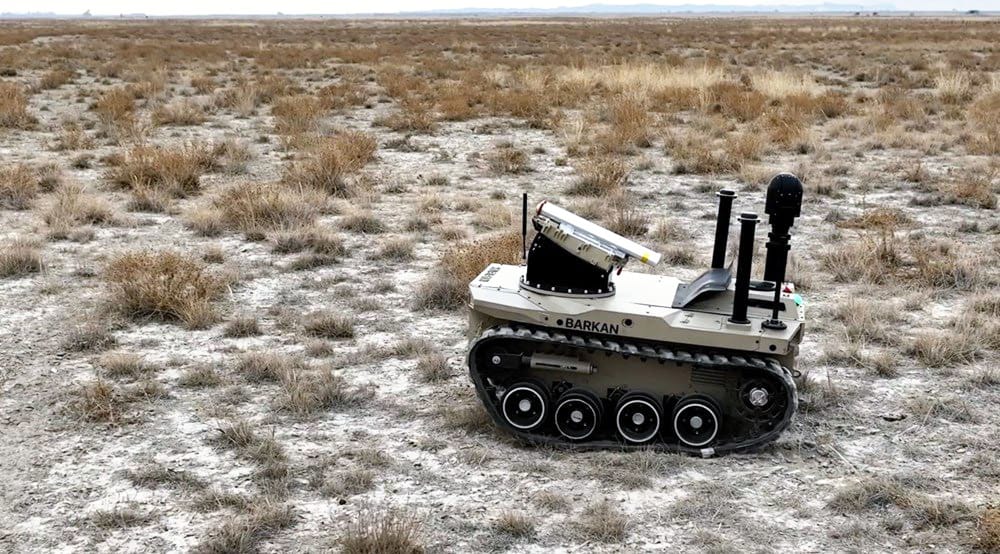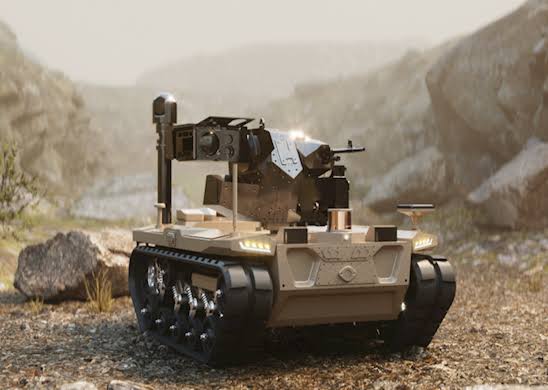BARKAN Unmanned Ground Vehicles Have Enter Turkish Service
Havelsan, a Turkish company operating in the defense and informatics sectors, announced that the BARKAN I and BARKAN II unmanned ground vehicles developed under the concept of “digital unit” have entered service with the Turkish Armed Forces (TSK). The company stated on its social media account, “Barkan is in the inventory of the Turkish Armed Forces.” and also expressed gratitude to companies like TEKATRON, SİO Aviation, Hitit Defense, ESETRON, ASISGUARD, REPKON, Dönmezoğlu, CANiK and Unirobotic, with whom they collaborated during the development of the vehicle in question.
HAVELSAN Product Development and Production Director Veysel Ataoğlu told Anadolu Agency about these vehicles, which were put into service after a two-year field test period, “The security forces will be testing this in the field, in different types of geographies, and we will be following them closely. Our development activities will continue at this point, even if the inputs change.” Furthermore, Ataoğlu stated that they exhibited these vehicles at various fairs abroad, that they would hold various meetings in this direction within the scope of the IDEF defense fair, and that they are carrying out intensive work for export under the coordination of the Turkish Defense Industry Agency.

Barkan is a medium-class unmanned ground vehicle (UGV) designed and manufactured by HAVELSAN, which has been conducting research and development in the field of robotics and autonomous technologies since 2019 in order to meet the needs of modern warfare. Barkan, the company’s first product in this field, was first unveiled in 2021. In this process, the company unveiled the BARKAN II UGV in 2022, based on platform user feedback. The two vehicles were designed to assist field personnel in a variety of ways, but mainly to increase the operational success of the Turkish Armed Forces, reduce military losses, and lower operational costs. However, the two vehicles differ slightly in terms of size, weight, mobility, payload, and weapons.

Because of their modular design, which allows different payloads to be integrated, Barkan unmanned ground vehicles can be used in multi-purpose missions. These duties include close protection for military units, equipment transport, casualty evacuation, bomb disposal, reconnaissance, and surveillance. To date, these vehicles have been outfitted with Aselsan’s 7.62mm Sarp-L Remote Controlled Weapon System, 12.7mm CANiK M2 QCB machine gun, 40-millimeter grenade launcher, Mete laser guided mini missile system, Robotic Arm (for bomb disposal missions), and a 3-meter Mast system for reconnaissance-surveillance missions. Havelsan is also working on integrating a special multi-launch system and high-power laser systems into Barkan UGVs.
HAVELSAN intends for BARKAN to be able to perform tasks in autonomous teams (swarms) with joint mission intelligence, as well as collaborate with other unmanned aerial, ground, and naval vehicles developed by HAVELSAN, as part of the “digital unit” concept. The concept’s other goal is to control multiple unmanned vehicles with a single console and operator. The capabilities of autonomous UAVs and UGVs, which can operate in swarms and teams, communicate with one another, and perform joint activities, have begun to be tested in the field. In the near future, unmanned surface vehicles will also participate in these trials.

